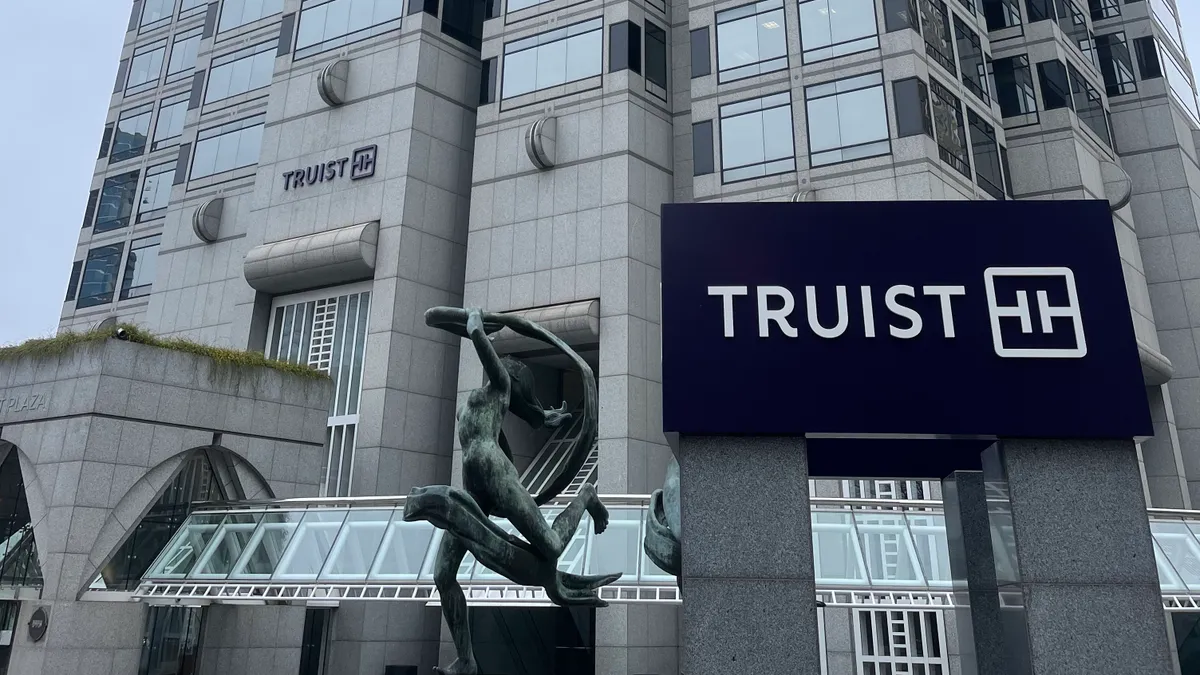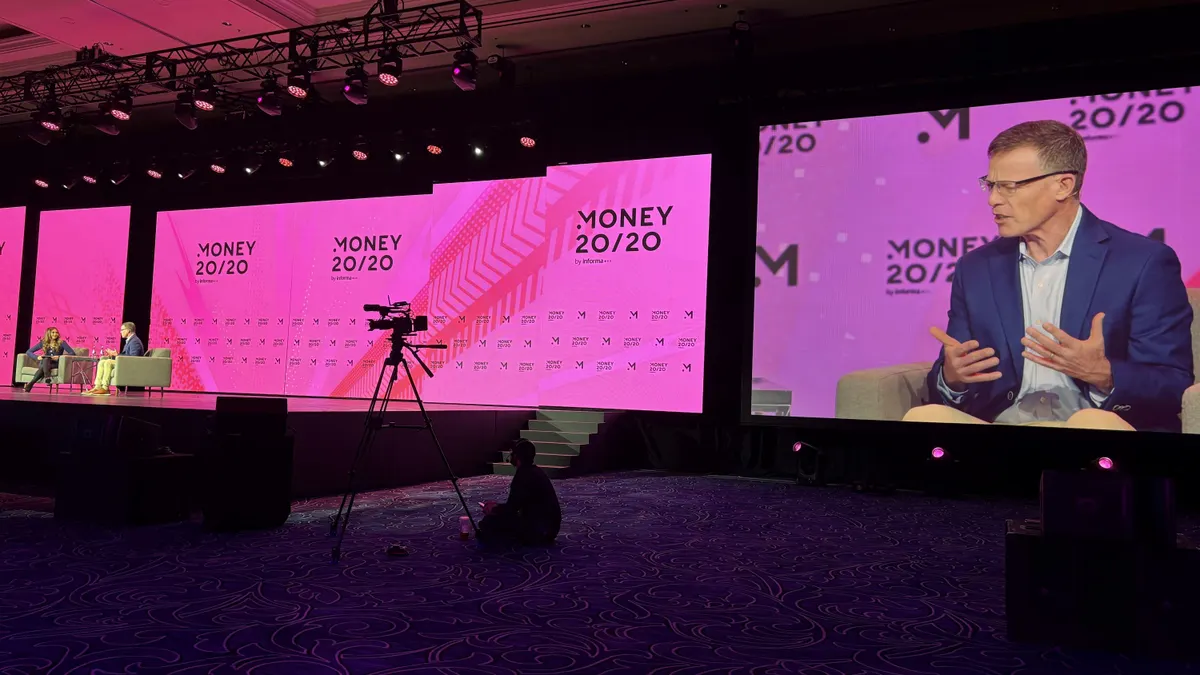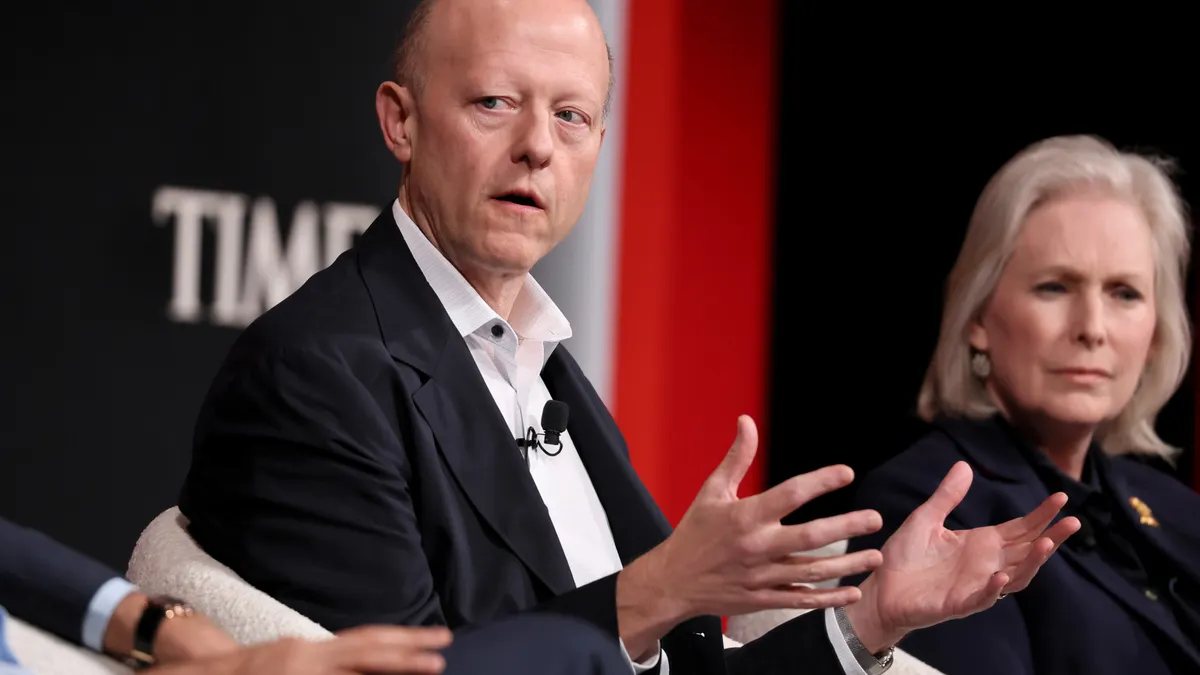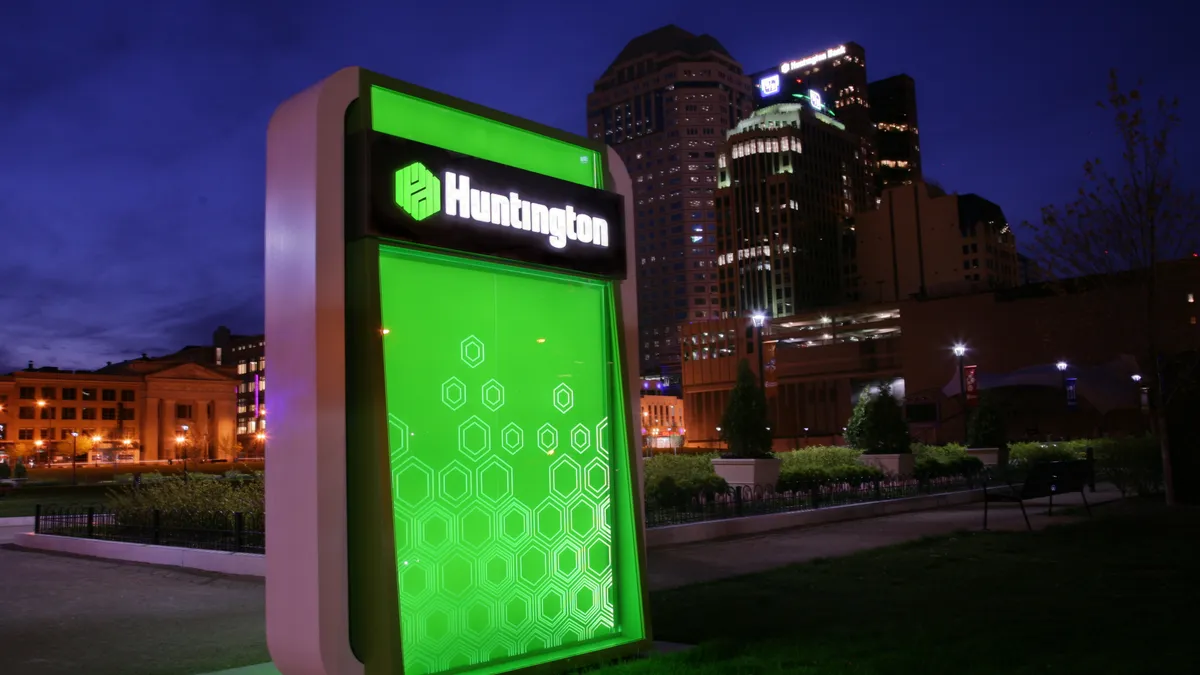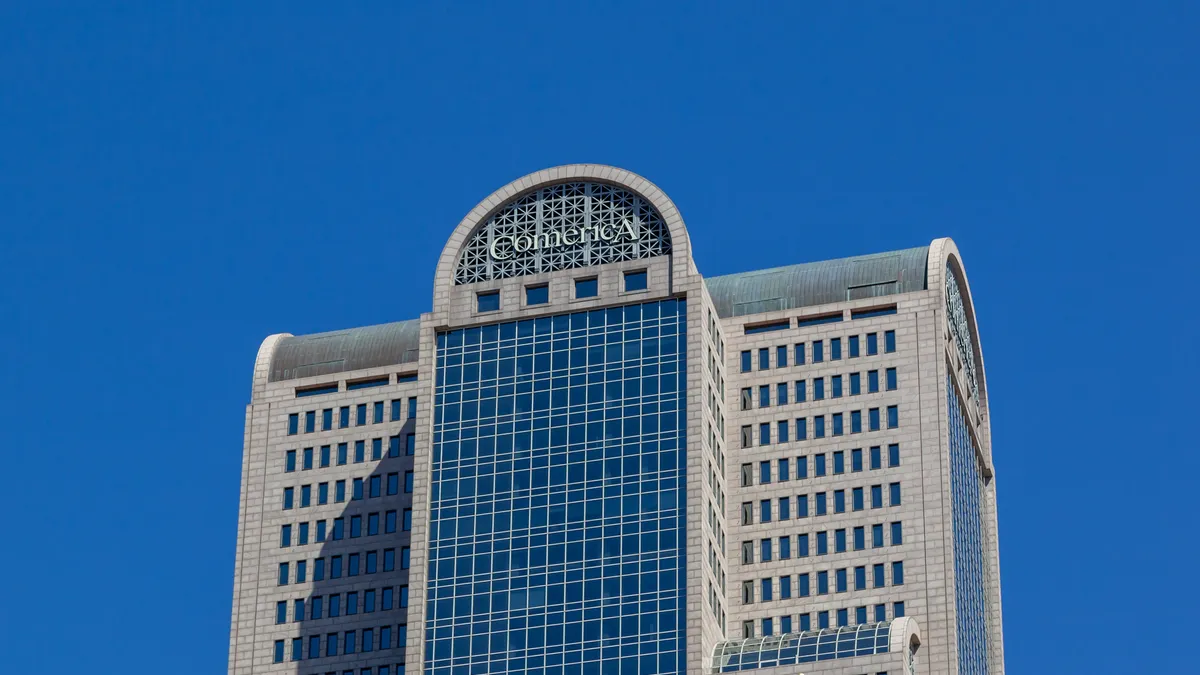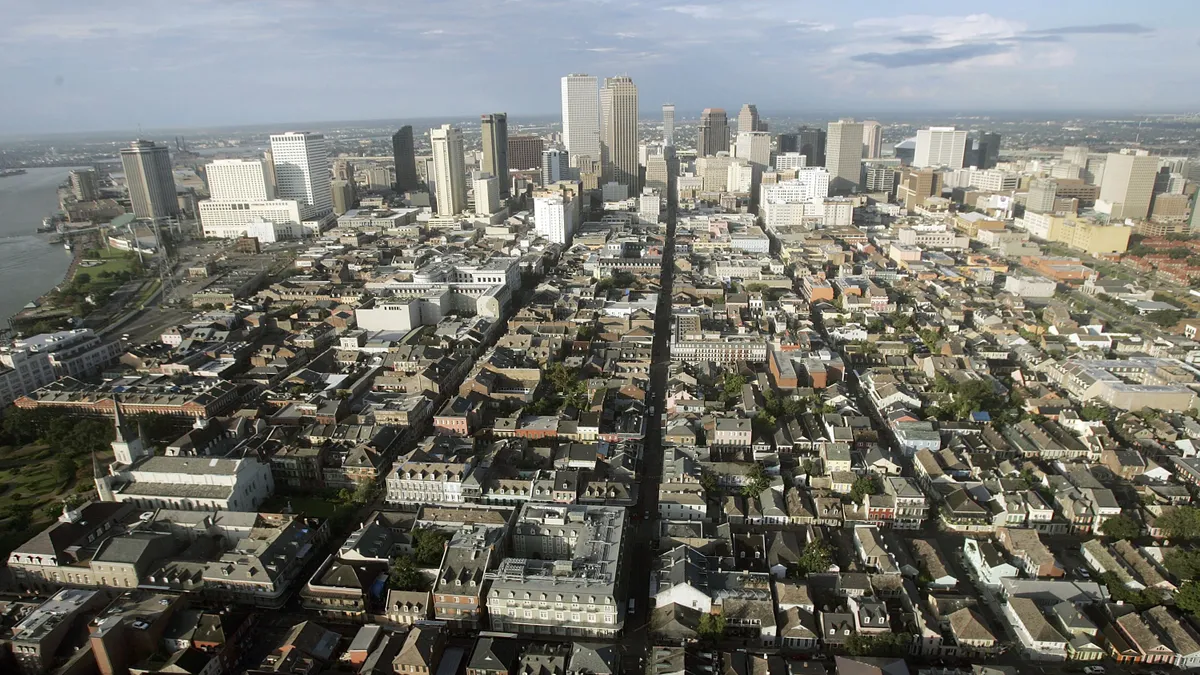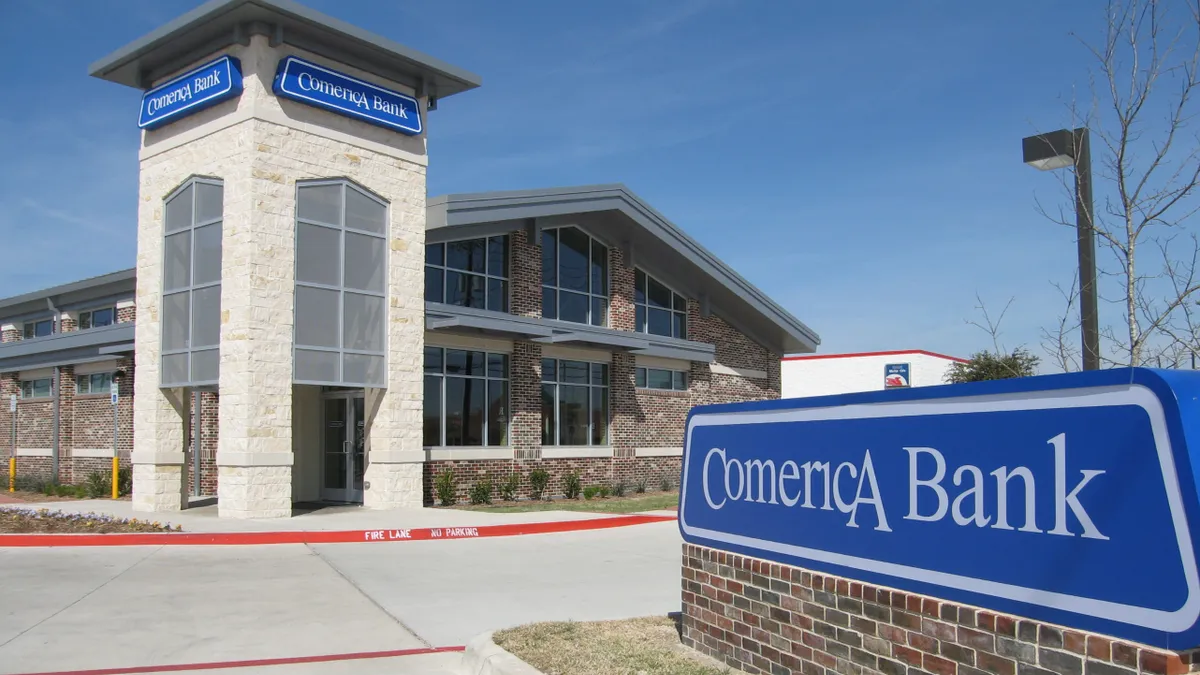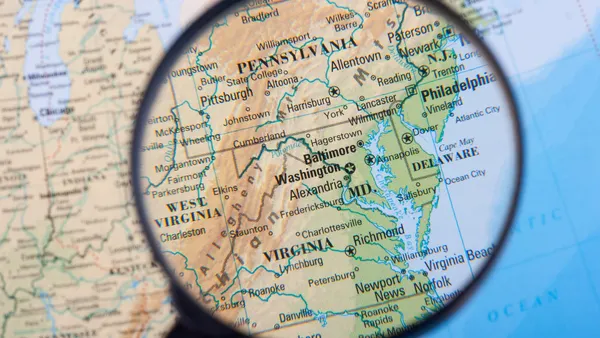BB&T and SunTrust will enter the new decade as Truist, having accomplished what the two banks set out to do in February, when they first announced plans to merge.
The deal, which involved Winston-Salem, North Carolina-based BB&T acquiring Atlanta-based SunTrust in a $28 billion purchase, became official this month, and is set to create the nation's sixth-largest bank.
But the next hurdles to clear will be internal ones, Paul Schaus, president, CEO and founder of consulting firm CCG Catalyst, told Banking Dive.
Although the two banks have touted the deal as a merger of equals, Schaus said the new entity must reconcile any cultural differences to retain both employees and clients.
The CEOs of both merging banks will continue at Truist — former BB&T CEO Kelly King is now CEO of Truist, and former SunTrust Chairman and CEO Bill Rogers is now president and chief operating officer of the newly merged bank. This sets up a potential clash or mesh of styles, Schaus said.
"You have two entities that are both big. It’s not like one is small and they're just being absorbed and the culture just gets forced," he said. "When you get two that are pretty much equal in size, you have a cultural impact that takes time to figure out how it’s going to work. ... So a new culture has to develop."
The South is watching
Because the two banks operate in the same market, there will be some customers who specifically chose one bank over another for various reasons, Schaus said.
“People who bank with BB&T, and if they were ever SunTrust clients and vice versa, they might not like the merger, because culturally, they’ll say, ‘It’s going to go back to what it was when I left them,’” he said.
The average annual attrition rate for bank customers is 5%, according to a 2015 analysis by Gallup. But that figure increases to 8% at banks that are acquired, Gallup found.
Customer engagement from the acquiring bank plays a key role in how many customers choose to stay with the merged entity, the analysis found. If the acquiring bank has lower customer engagement than its target bank, customer attrition at the target bank can jump to as much as 10%, Gallup found.
Any time a bank undergoes major change, its customers become a target for competitors, Schaus said.
"And there's a risk there," he said. "That's why every bank in the South right now is looking at this. Whenever there is change, people get irritated and it’s a great time to pick up clients," he said.
Truist will also need to focus on retaining its employees in the midst of change.
"It's very hard for a bank, especially at this size, to create the enthusiasm and rah-rah to go all the way through the ranks," he said.
The banks said in October that they named approximately three-quarters of the leadership roles for Truist, and 8,000 employees accepted positions at the merged bank, according to the Atlanta Business Chronicle.
Keeping those employees happy throughout the process should be a top concern for Truist, Schaus said. Any discontent among staff can lead to departures and have a negative impact on customers.
"I always tell banks, if their front-line staff doesn’t like what's going on, the customers hear it," he said.
Communication will be a key factor in whether or not a bank the size of Truist can overcome any internal cultural differences and retain customers who may view changes in a negative light, Schaus said.
"When you’re merging, it can be what we call a disruptive force. You're not really getting much accomplished because you're all focused on trying to bring it together," he said. "A disruptive force can keep you out of the market and keep you from moving forward. So that is one of the things they have to worry about."
Policy differences
Lawmakers showed an interest this summer in one area in which BB&T and SunTrust’s policies seem to diverge: financing the gun industry
Reps. Carolyn Maloney and Nydia Velázquez, both D-NY, pressed King and Rogers on their banks' respective stances during a July hearing in front of the House Committee on Financial Services.
"SunTrust has a very careful screening process, where different committees examine the transaction. And transactions with gun manufacturers are almost always denied," Maloney said. "BB&T, on the other hand, has no specific gun policy."
BB&T arranged $147 million in loans to gun companies between 2012 and 2017, according to research from Guns Down America.
When asked by Maloney if Truist, like SunTrust, plans to deny loans to the manufacturers of assault weapons, King said the bank’s policy is to help clients achieve financial success and economic security according to the law.
Velázquez replied, "I take that as a 'no.’”
Whether or not the policy will be revised under Truist remains to be seen.


